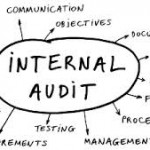KPMG: What the top considerations for Internal Audit in 2017

Competing in a rapidly changing world, companies must grapple with emerging challenges seemingly every day: cyber threats, emerging and potentially disruptive technologies, business performance risk and more. In this increasingly complex environment, Internal Audit (“IA”) has a crucial role to play to help the organization in managing risks associated with these diverse business trends. This is also in line with the UK and Dutch Corporate Governance Codes.
An impactful IA function will stay current with these wide-ranging business issues as they emerge so it can help monitor related risks and their potential effects on the organization. To provide the greatest value, IA must find opportunities to challenge the status quo to reduce risk, improve controls and identify potential efficiencies and cost benefits across the organization.
To help IA functions achieve these goals, KPMG surveyed IA functions from companies in multiple industries globally and in the Netherlands. The result is KPMG Internal Audit: Top 10 Considerations for 2017, which outlines areas where IA should focus so it can effectively add value across the organization and maximize its influence on the company.
Top 10 Considerations for 2017
- Cybersecurity
- Culture/Soft Controls
- Integrated Assurance
- Regulatory compliance
- Third party relationships
- Anti-bribery/anti-corruption
- Emerging technologies
- Data analytics and continuous auditing
- Performance risk
- Strategic alignment
The KPMG Internal Audit: Top 10 Considerations for 2017, can help ensure that IA allocates its valuable resources to those areas of highest impact to the organization. This should result in a wide range of competitive benefits, from improvements in internal control environments and enhanced risk management processes to a more confident audit committee.
Read more: ![]() – KPMG Internal Audit
– KPMG Internal Audit
Source: KPMG





























